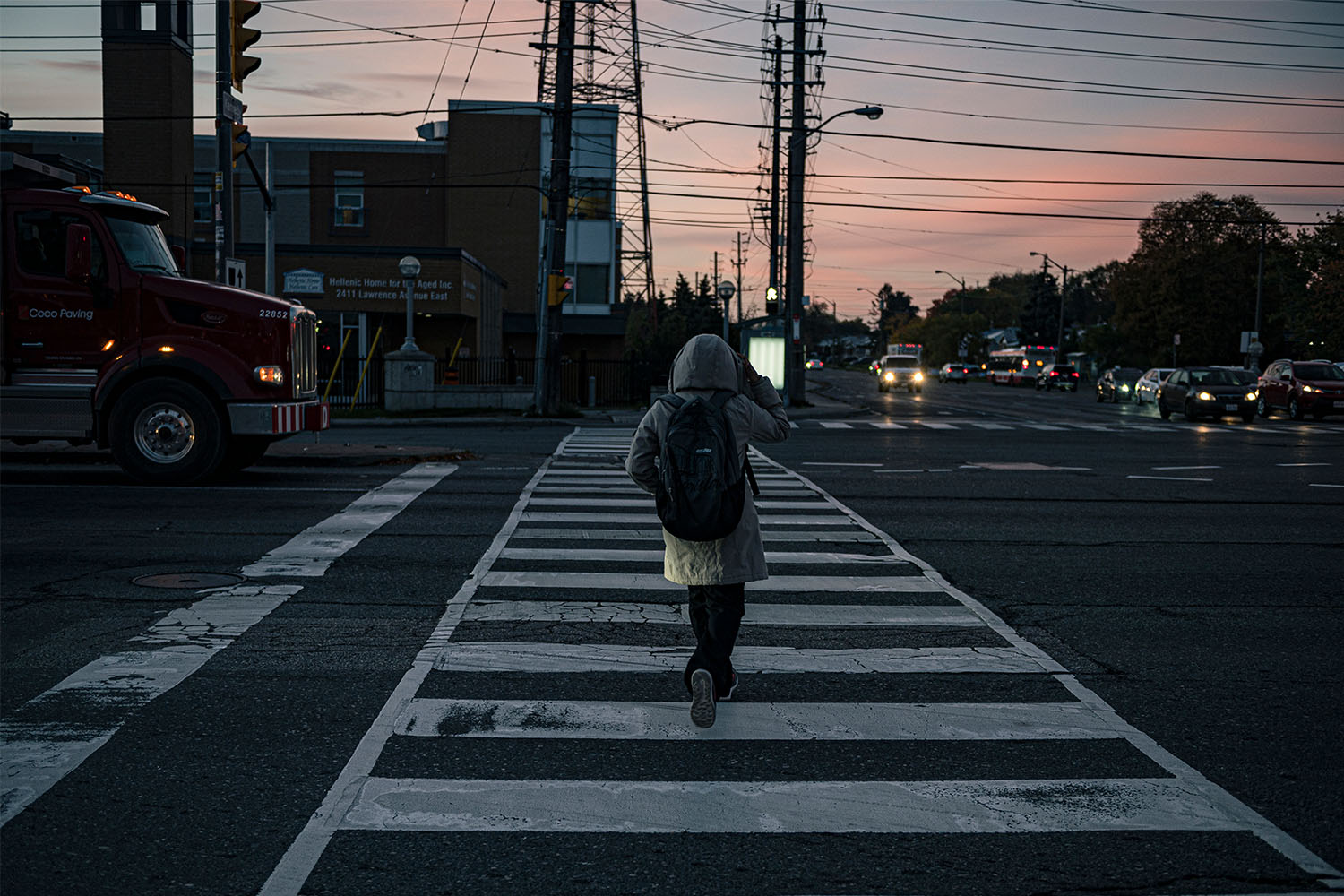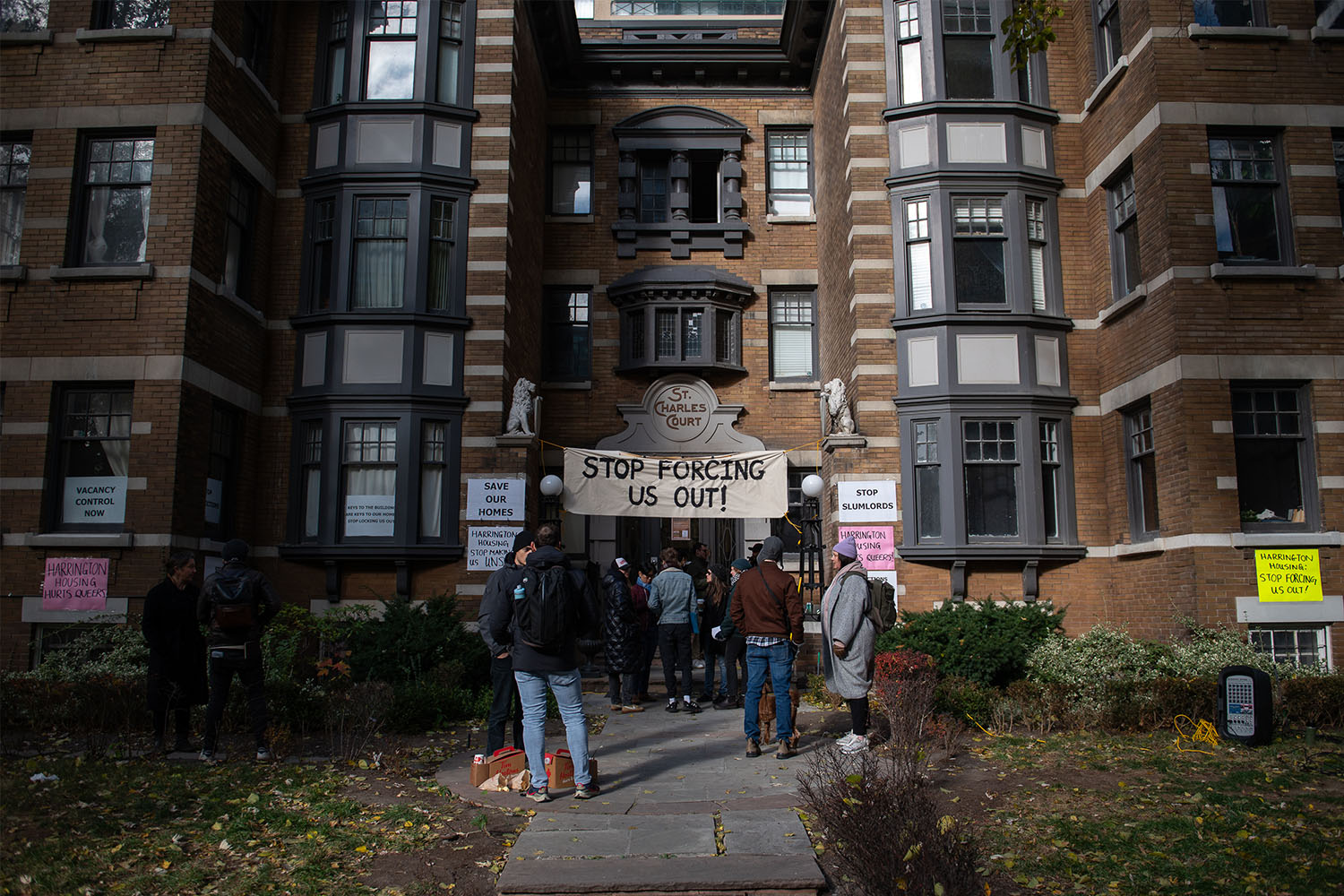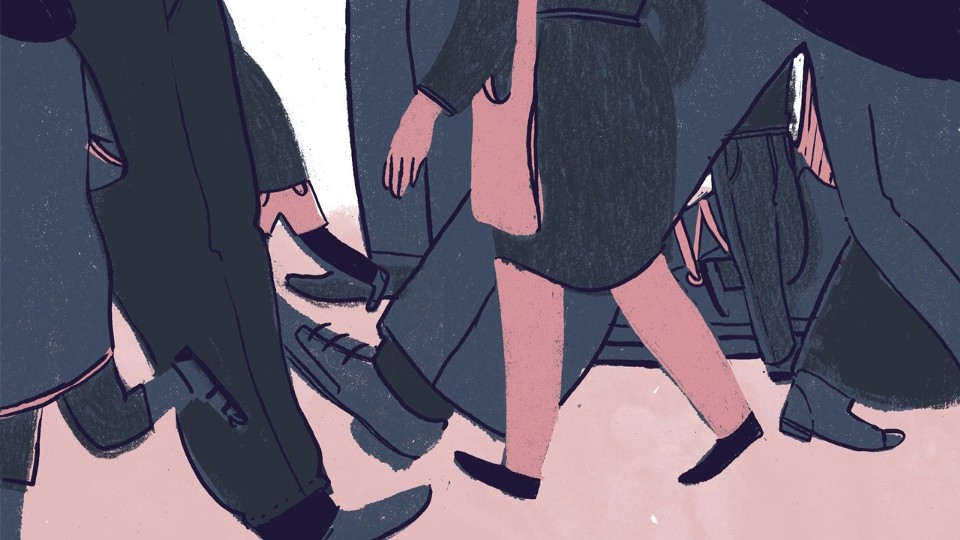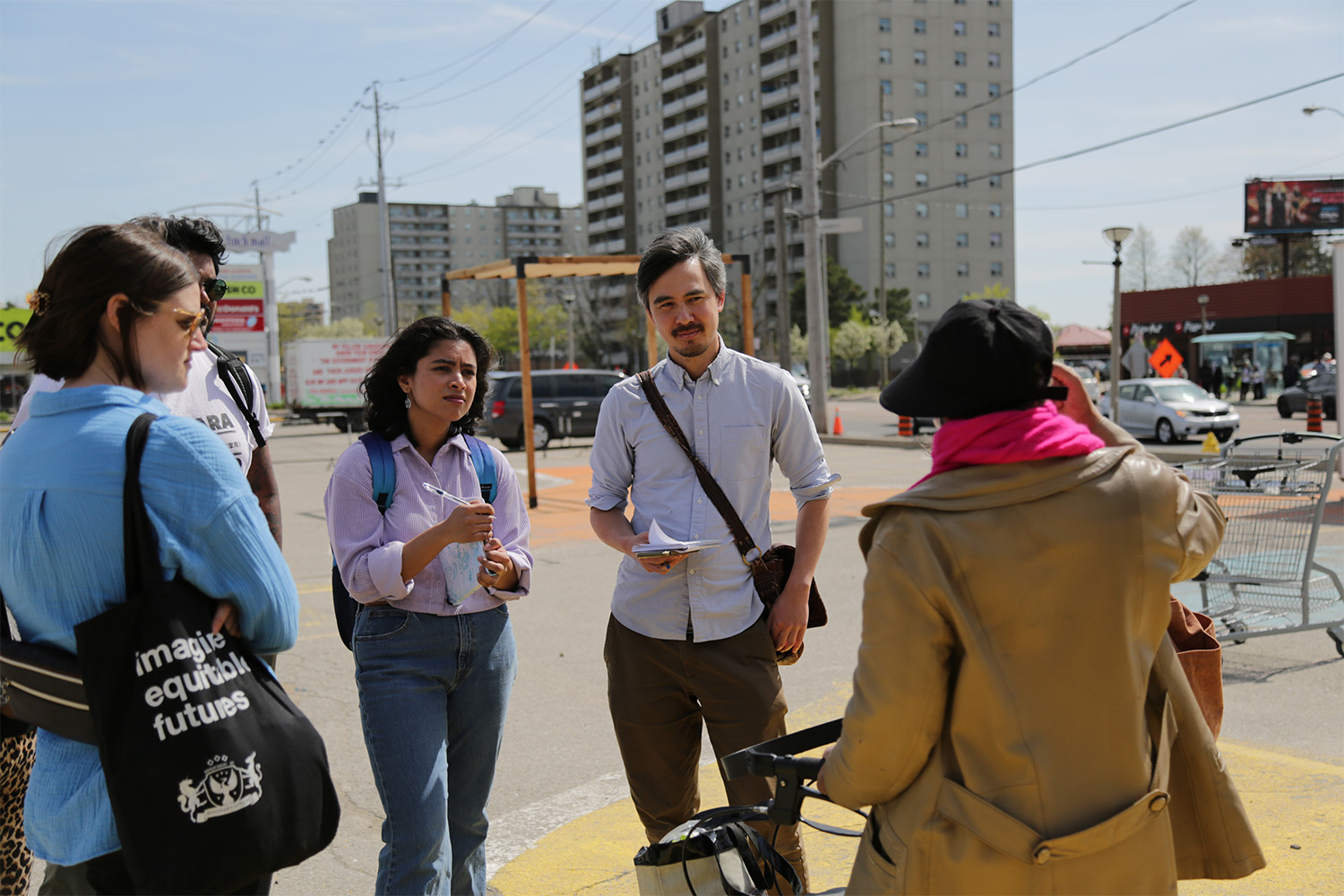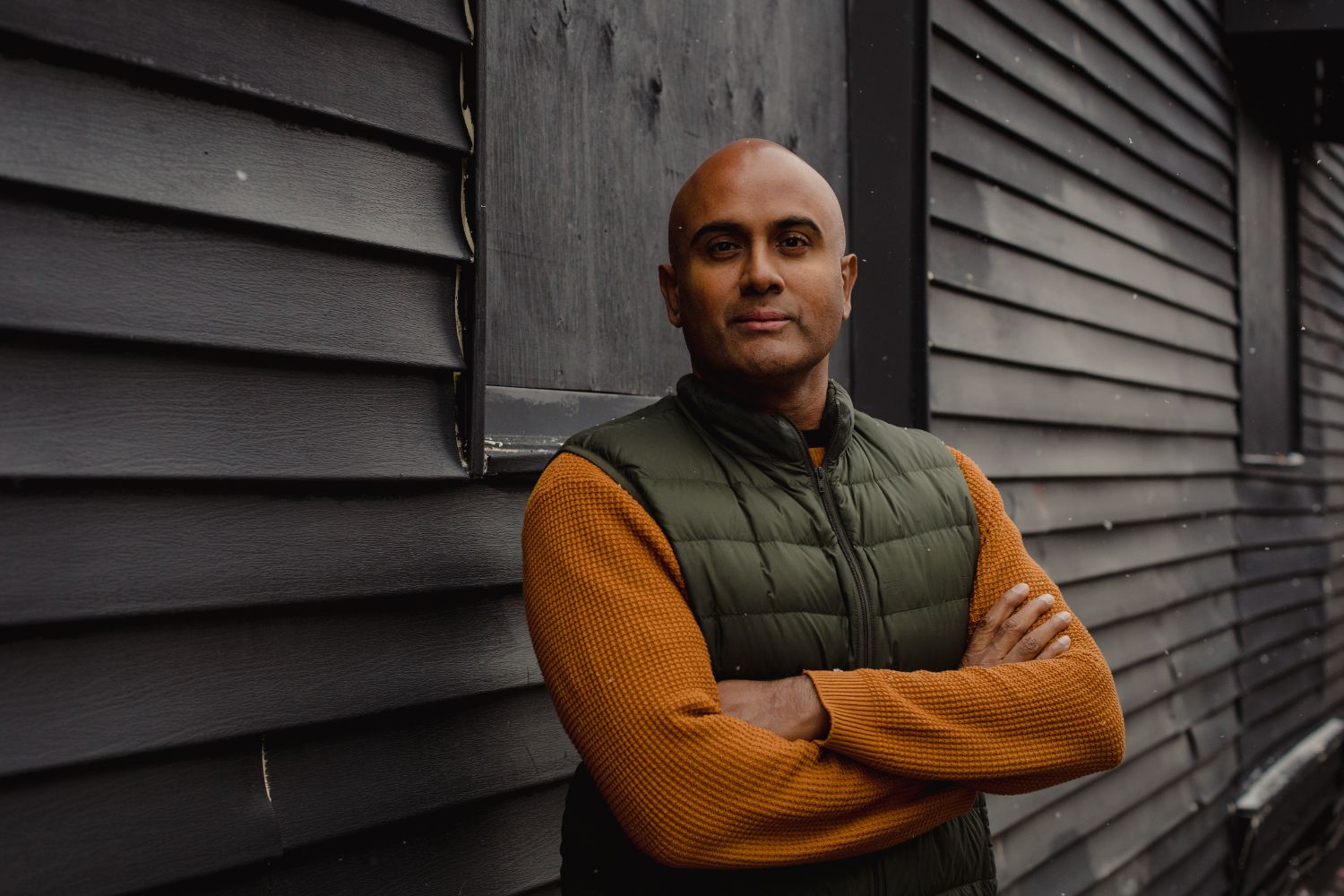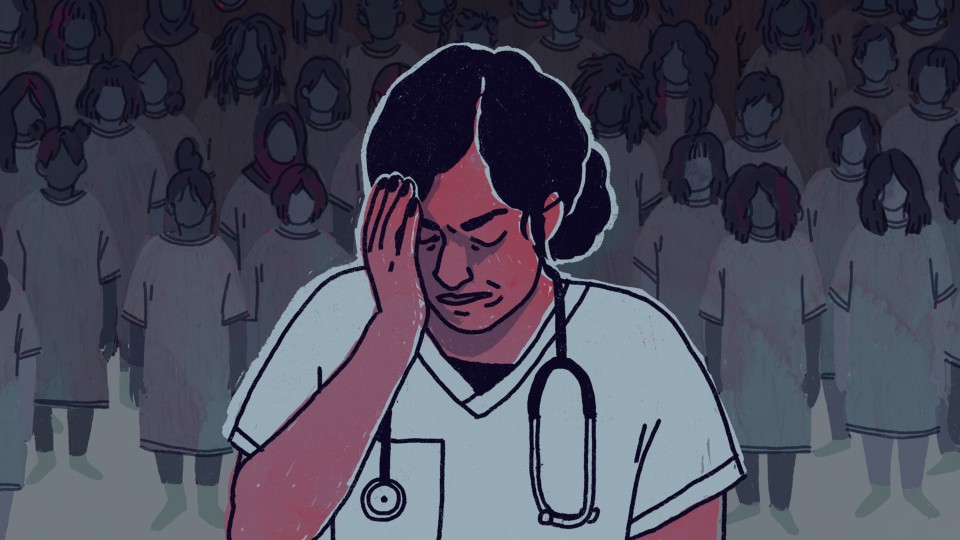
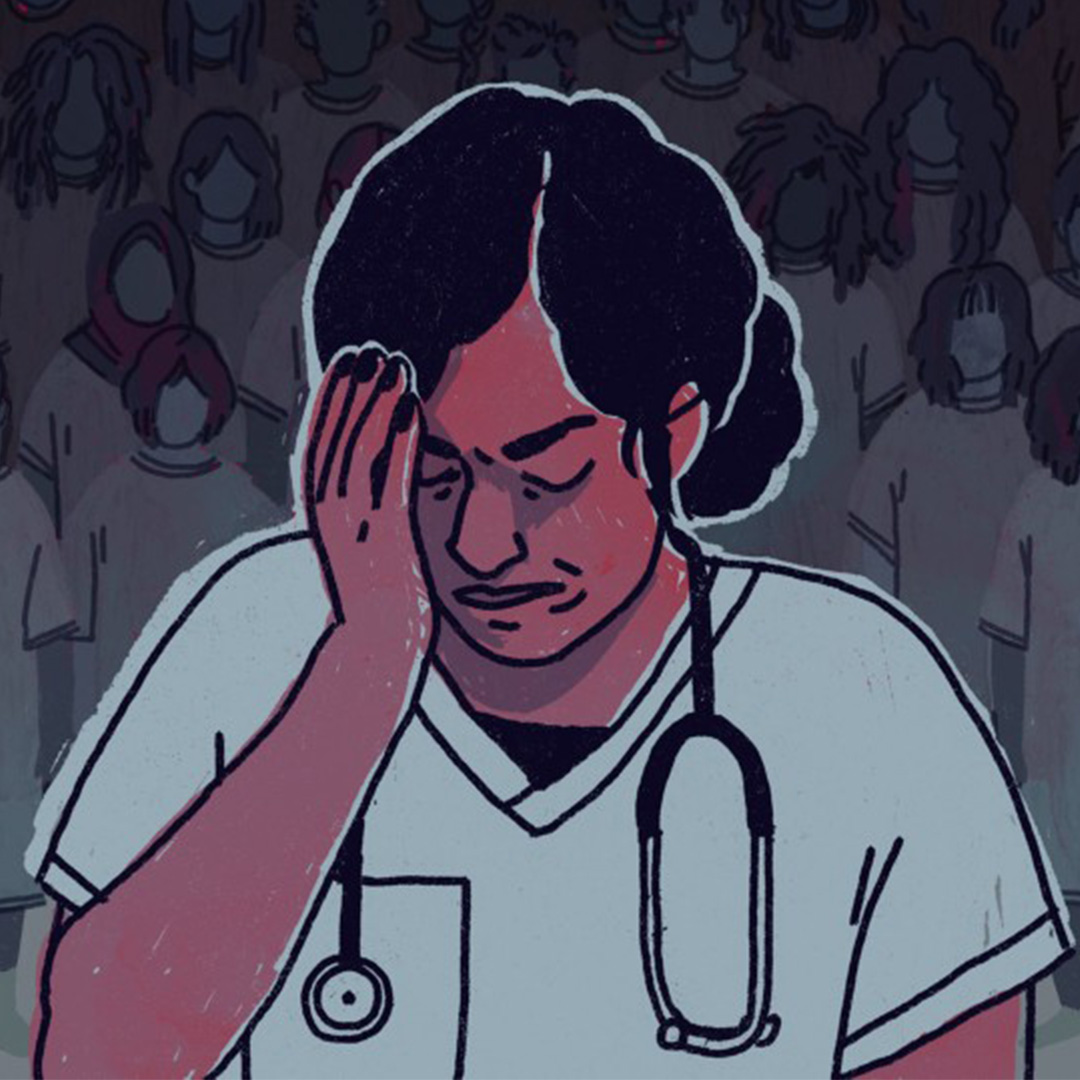
“Is anybody close to you hurting you? Physically? Sexually? Emotionally? Financially?”
The questions tumble from Abida Dhukai’s mouth quickly and placidly, with the self-assurance of someone who has asked them thousands of times. Preparing to see a female patient always starts the same way. First, she puts up a wall. “I need to protect myself a little bit because I don’t know what I’m going to hear,” says Dhukai. And then she runs through her mental checklist aloud. “How safe do you feel?” “Do you have children?” “Are you financially independent?” “Does your abuser know where you work?” Dealing with these cases necessitates distance, running through checkboxes so as not to get too close to the rising tide of anger she feels.
Dhukai is a wiry woman of Indian descent, with long dark curly hair tied back in an efficient bun. She talks like she’s got places to be, and she usually does. For ten years, Dhukai has worked as a nurse practitioner in Mount Sinai Hospital’s emergency department. She sees patients with ailments that range from twisted ankles to heart attacks to domestic assault. Over time, she began to focus on women’s health in the department, thinking about ways the ED could better treat the women who come in. She was especially interested in what she considered a less-than-empathetic response to the women who reported that they’d been sexually assaulted. As a young nurse practitioner, she realized she could learn more if she took notes on her phone about her thoughts and feelings after each of those cases.
Today, her notes file is hundreds of thousands of words long. It has become an overwhelming archive of fluctuating trends, with entries that start: “I saw another one today… I’m exhausted and sad.” When women reported that police officers had victim-blamed them, she wrote it down. When women blamed themselves, suggesting maybe they’d had too much to drink, she wrote it down. “As I saw more and more of it, I felt more angry,” she writes. “How can somebody do this to another human being?” Reflecting on that encyclopedia of experiences made her realize that the hospital needed stronger protocol for dealing with patients suffering from abuse. So she approached Christine Bradshaw, a social worker and the chair of the hospital’s Violence Against Women Awareness Committee, and the two worked together to implement small changes in how the emergency department receives these patients.
Over time, they have innovated. In the emergency department, they register assault victims under aliases. They conceal pamphlets in patients’ possessions, so that women who disclose don’t have to carry them home to a dangerous environment. And they ask every woman who is admitted into the hospital’s women and infants department whether anybody close to them is hurting them physically, sexually, emotionally or financially. Still, universal screening — the practice of asking every person who enters the emergency department whether or not they’re being abused — isn’t mandatory, and many Ontario hospitals still don’t require it. So it’s left to clinicians to determine when someone’s story and symptoms don’t match or to ask every patient they see, as Dhukai does.
“When I first started out, I’d see one or two women a week who’d been sexually assaulted,” Dhukai says. “Lately, I see four or five on a Saturday morning who’ve been raped on a Friday night. And another four to five on Sunday.”
There are cases that stand out in the deluge. The wealthy woman who cautiously admitted her husband was physically assaulting her. The young girl who barricaded herself in the hospital bathroom, threatening to self-harm because she was convinced an assault had been her fault. One weekend, last February, Dhukai walked up to the private waiting room in the department, which sees the most urgent cases. A police officer was standing watch outside the door, a gesture of protection to the young woman who sat inside, a victim of a violent gang rape committed by five men. Around Dhukai, the emergency department’s furor continued, with people coughing, yelling, drunk. But something in her tipped that day. It was the ninth rape case she’d seen that shift. “I remember that ninth case. I can still see her,” Dhukai says. For weeks after, she was quiet and withdrawn. She took a little time off work. She could feel her brain getting sluggish, and she knew she needed space.
But it’s not being haunted by those faces that makes her worry. What makes her more concerned is when they start to blend together — when a patchwork of bruises on one patient reminds her of another.
“They mesh together sometimes,” she says. “It’s disturbing.”
Lately, it feels like discussions about #MeToo are everywhere, and they should be. As companies grapple with how to handle an avalanche of incident reporting, an already over-burdened health system must determine how to best offer care to traumatized patients who require complex physical and emotional attention. “It’s opening the door to way more conversations,” says Bradshaw. “MeToo has significantly raised people’s awareness. And nobody wants to sit with this anymore. They want to talk about it.”
Because hospitals see patients contending with all manner of maladies, from strokes to miscarriages to urinary tract infections, determining where emotional distress falls on the acute-needs spectrum can be a challenge. The emergency department plays a unique role in the societal response to sexual assault. It’s often the only place where nurses, social workers and police officers converge to ensure a victim is safe. It’s also sometimes the only place where someone who has experienced abuse will be alone with another person long enough to talk about it. At Sinai, the ED tries to expedite cases that deal with abuse, or send someone out to sit with the person who has disclosed so they aren’t alone. “I say, you can hang out here. It’s loud, noisy, you won’t get sleep and the food is not ideal. But we’ll take care of you while you wait,” Dhukai says.
“When I first started out, I’d see one or two women a week who’d been sexually assaulted. Lately, I see four or five on a Saturday morning who’ve been raped on a Friday night.”
In these cases, the burden of care, at least professionally, falls to caregivers on the frontline like nurses and social workers. If someone discloses abuse to her, Dhukai’s next question is: “How safe do you feel?” From there, the conversation can take a myriad of paths. If there are children involved, any health care professional has a duty to report that to the Children’s Aid Society. Dhukai will carefully elicit the exact details of the abuse, and whether or not the victim has ever considered pressing charges. If it’s between the hours of 8 a.m. and 10 p.m., she’ll ask if her patient wants to speak to the social worker on staff or if she wants to be examined by a sexual-assault nurse. “If there’s something that I can do to make sure she’s safe, I will,” Dhukai says. “I offer shelters, a list of resources.” A note gets placed in both the patient’s paper chart and their electronic record to indicate that they’ve disclosed abuse, that the hospital should be extra diligent about who is given information about their health or whereabouts. “You need to share that information with everybody from the security guard to the triage nurse,” Bradshaw says. “An abuser could come up and say, where is she? And someone says, oh, she’s over there.” They learned that one from experience.
The unique challenges of working as a sexual assault nurse carries with it a number of occupational hazards. Hearing graphic narratives every day, Sexual Assault Crisis (or SAC) nurses can experience cognitive disruption in intimacy, safety, trust and control, in some instances as significantly as the victims of trauma they treat according to one study published in 2015 in the Journal of Forensic Nursing. They’re more susceptible to vicarious trauma — the emotional residue that comes from empathetically engaging with people’s pain or fear — than most other kinds of nurses, which can lead to social withdrawal, emotional numbing, nightmares, and even enjoying sex less. A burgeoning field of study indicates that people who suffer from vicarious trauma can experience burnout, compassion fatigue, and even post-traumatic stress disorder.
Among sexual-health nurses, attrition rates are high, which can lead to disruptions in continuity of service. One 2016 report, from the U.S. Government Accountability Office, said the state of Wisconsin had a .08 per cent retention rate. “Officials in one state estimated that while the state trained 540 examiners over a two-year period, only 42 of those examiners were still practicing in the state at the end of those two years,” the report reads.
Three years ago, Amanda Pyper sat across from a defense lawyer in a Toronto courtroom, answering the same question asked fourteen different ways, over and over again. Pyper was testifying in a case related to her work as a sexual-assault nurse at Women’s College Hospital. She’d administered a rape kit to a patient months before she received a subpoena requesting her presence in court. She was allowed to review the patient’s hospital chart before she appeared. She’d only spent a couple of hours with the woman — one of countless patients she’d seen in her decade-long career.
When Pyper first started as a nurse in the Women’s College program, she was 23 and just out of school. Right away, she was administering forensic exams and offering crisis counselling to women, many of whom appeared at the hospital because they’d been assaulted by a stranger. “I was very stressed out,” she says. “I was constantly anxious about making mistakes. I was the only health care professional many of those people had contact with. I had a lot of autonomy in terms of decision-making and changing the course of people’s care and lives.”
“The biggest thing people want is trauma counselling, and I’m not trained in how to do that.”
As she grew more comfortable in the role, easing those concerns got easier. But other parts of the job never did. Overnight shifts were especially grueling. It’s then that the sexual-assault nurses from Women’s College travel across the city, answering pages from hospitals like Sunnybrook, St. Michael’s, and Mount Sinai, telling violated and vulnerable patients that they have to wait. A rape kit can’t be administered over the phone. The hardest part of the job was talking with the women who came in searching for answers Pyper couldn’t give them. “A lot of people want to know, was I sexually assaulted? People come in wanting an answer, yes or no,” she says. “I don’t think people fully appreciate that there is no test for that.”
In the last few years, the demands of the job have increased dramatically. Years ago, situations ranged from stranger rape to date-rape drugs, but the cases tended to be clear cut. But as education around consent and sexual assault has changed — in school, at home, and in the media — reporting now tends to be less straightforward. Pyper sees more situations involving people the victims considered friends or exes. She’s not a social worker, a crisis counsellor, or a soothsayer. As more and more people come in with cases involving alcohol and uncertainty, it makes following a methodical medical protocol difficult, because those cases require so much more than a forensic test. “The biggest thing people want is trauma counselling,” she says. “And I’m not trained in how to do that, so I was finding that I wasn’t providing people with the best care.” Eventually, the demands of the job grew too great. Pyper left her role as a sexual-assault centre nurse in October. Still, it’s a role that will stay with her for years.
“It doesn’t stop once you leave,” she says. “I could get a subpoena tomorrow.”
When Dhukai gets home from a particularly grueling shift, she sinks into bed, and speaks to no one. After almost a decade of this kind of work, she has developed rituals that help her offer care at the standard she expects of herself. For one, she doesn’t watch the news. She exercises like a fiend, spending an hour a day biking on the trails of Toronto or doing yoga. And she sits in her bedroom, surrounded by photos of places she’s travelled, and mentally escapes by meditating for an hour every day. It helps dispel the daily flashes of anger that rise up within her, at a system that doesn’t protect women before they become her patients. When work feels overwhelming, the nurses talk to each other, checking in to make sure they’re taking care of themselves. They can access the services of the hospital’s social workers themselves, Dhukai says, but she has yet to find an outside resource who understands the convergence of sexual assault narratives and an emergency department that operates at a breakneck pace.
Sometimes, the greatest challenge of the job is quieting the voice inside that compels her to save every woman who walks through the doors. “I wish I could just wrap them up in my arms and say, everything’s going to be okay. Just come with me, my little ducklings, I will take care of you,” she says. “But I can’t.”


